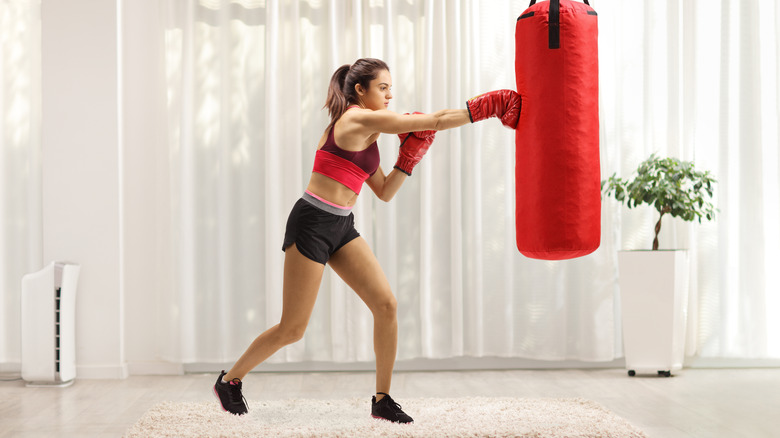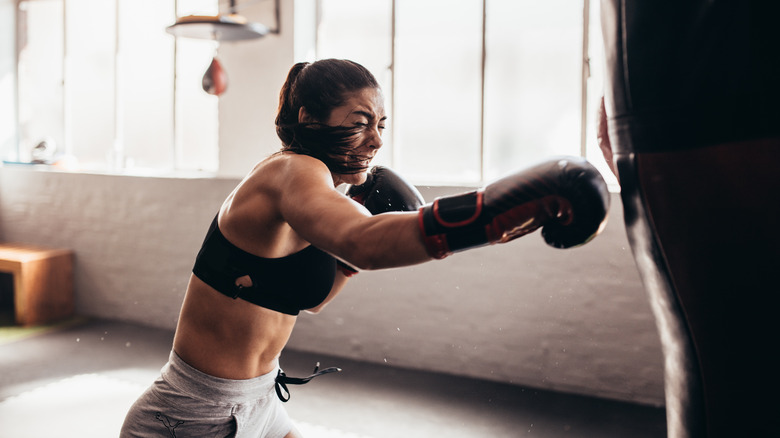How To Know What Size The Right Punching Bag Is Right For You
Boxing is sort of the iconic train-at-home sport. Movies like Rocky have instilled a love of training montages in generations of people while romanticizing the sound of a fist hitting a punching bag. And of course few people can forget Captain America working his anger out on those same kinds of punching bags as he adjusted to life in the 21st century.
While sports aren't always accurately depicted in the media, it really is easy to work boxing into a home-based workout routine. The hardest part is finding the right kind of bag for your needs and then finding the right size of that bag. And despite how they may look, there are distinct differences in bag types and weights.
Most people are familiar with the traditional punching bag, also known as a heavy bag. This is the kind that hangs from chains attached to the top which are then hooked into another chain hanging from the ceiling. These are great for traditional boxers and some kinds of kicks, according to Dick's Sporting Goods.
For people who almost exclusively use kicks, Dick's recommends the free-standing bag or a tear-drop bag which is similar to a heavy bag but is a teardrop shape instead of a cylinder. And for those who practice MMA, a body bag might be best. These are bags that lay on the floor and have approximations of arm and legs attached so fighters can practice a range of moves.
Finding the right size
There is one more choice you have to make once you know the type of bag best suited to your needs. Every bag comes in a variety of weights and lengths, which means that some bags are better suited to certain people than others. And, as Everlast explains, this is usually based on either your height or your weight.
Everlast is one of the best known boxing companies out there. Their products have been in gyms and boxing rings for decades. So when it comes to boxing, they know their stuff. They recommend that people buy heavy bags as close to half their weight as possible. A 180 pound person, for example, will want a 100 pound bag while a 160 pound person will need an 80 pound bag.
For speed bags, Everlast breaks down sizes based on the boxer's experience. Beginners and people with moderate experience should buy a large bag while advanced boxers can get a medium bag. And while Everlast doesn't give any suggestions on freestanding bags, Dick's Sporting Goods suggests finding a freestanding bag whose padding is centered around the user's kick height.


